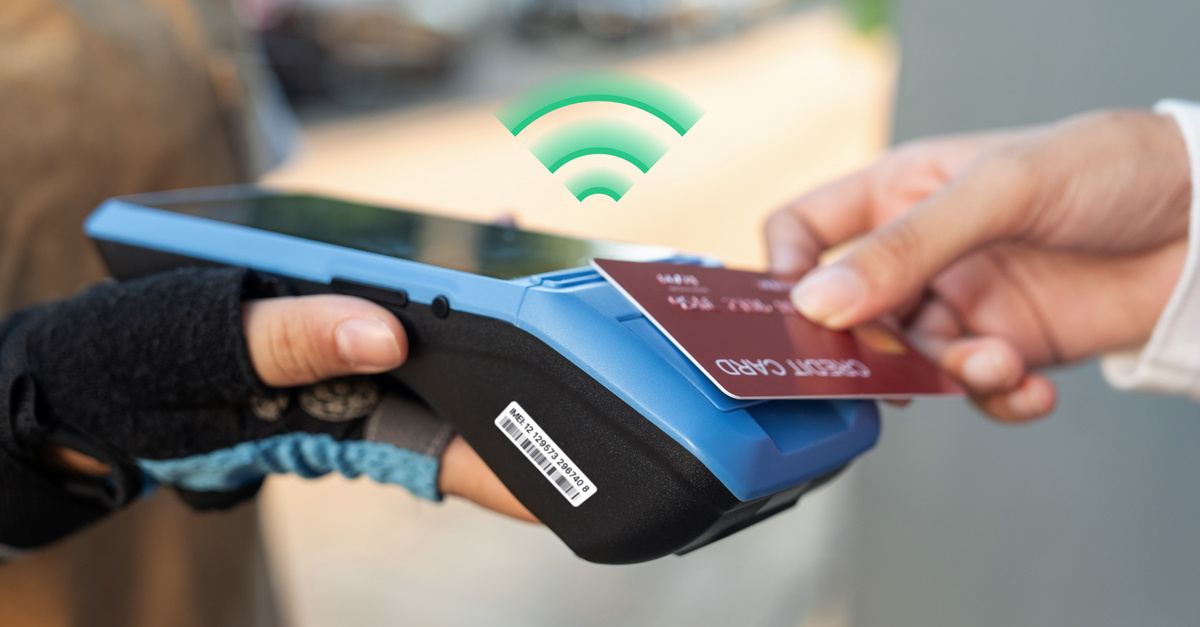IoT is changing everything. Smart cities utilise traffic lights to minimise congestion. Factories know when machines need fixing before they break. Doctors monitor patients from miles away.
What is the Internet of Things (IoT)?
The Internet of Things is like giving everyday objects a brain and the ability to talk to each other. Think of your regular coffee maker. Now imagine it can connect to the internet, learn when you usually drink coffee, and start brewing automatically. That's IoT in action.
IoT connects physical things—like your phone, car, washing machine, or even a streetlight—to the internet. These objects have tiny computers and sensors that collect information about their surroundings. They can then share this information with other devices or with you.
Here's what makes IoT special: these devices don't just collect data—they act on it. A smart thermostat doesn't just know the temperature. It learns your daily routine and adjusts the heating before you get home. A connected car doesn't just tell you it needs an oil change. It can schedule the appointment for you.
The magic happens when millions of these smart devices work together. Your fitness tracker talks to your phone. Your phone connects to your home's smart system. Your home system coordinates with your car. Together, they create a network that makes your life smoother without you thinking about it.
The best part? You don't need to be a tech expert to use IoT. The technology works behind the scenes, making things happen automatically so you can focus on what matters most to you.
History and evolution of IoT
IoT started in 1982 with a simple idea. Students at Carnegie Mellon University connected a Coke machine to the internet. They wanted to check if drinks were available and cold without walking to the machine. This was the first internet-connected device.
The term "Internet of Things" came later in 1999. Kevin Ashton, a British researcher, used this phrase while working on smart inventory systems. But the real growth began in the 2000s when three things happened: wireless internet became common, computer chips got smaller and cheaper, and smartphones gave everyone a way to control connected devices.
The 2010s brought IoT to regular people. Smart home devices, fitness trackers, and voice assistants became popular. Today, we're seeing IoT merge with artificial intelligence and super-fast 5G networks, creating smarter and faster connected systems than ever before.
How does IoT work?
Understanding IoT is easier when you break it down into simple parts. Think of it like a conversation between smart objects that helps them work together better.
Devices and sensors
IoT devices are everyday objects with special sensors added to them. These sensors are like the five senses for machines. A temperature sensor feels hot and cold. A motion sensor detects movement. A light sensor knows if it's bright or dark.
These sensors constantly watch their surroundings and collect information. A smart smoke detector senses smoke. A fitness tracker measures your heart rate. A connected car monitors engine temperature. Most of these devices run on batteries that last for months or years.
Connectivity
For IoT devices to be useful, they need to talk to each other and to you. They do this through different types of connections, just like how you might call, text, or email someone depending on what you need to say.
Some devices use Wi-Fi, like your home internet. Others use cellular networks, like your phone. Some use special low-power networks designed just for IoT devices. The choice depends on how much data needs to be sent, how far it needs to travel, and how much battery power is available. For a deeper understanding of how these different communication methods work, you can explore various IoT protocols that make this connectivity possible.
Data processing
Once information is collected, it needs to be understood and turned into useful actions. This happens in three places: on the device itself, on nearby computers, or in the cloud (powerful computers on the internet).
Simple decisions happen quickly on the device. Complex analysis happens in the cloud. For example, a smart doorbell can instantly detect motion and start recording. But recognising if the person is a family member or a stranger might happen in the cloud using artificial intelligence.
User interaction
You interact with IoT systems through apps on your phone, computer dashboards, or voice assistants like Alexa or Google Assistant. These interfaces show you what's happening with your devices and let you control them.
Good IoT interfaces are simple to use. You shouldn't need to understand the technology to benefit from it. A smart thermostat app might just show the current temperature and let you adjust it with a simple tap.
Automations
This is where IoT becomes powerful. Devices can automatically respond to situations without you doing anything. Your smart lights turn on when you come home. Your irrigation system waters the garden only when the soil is dry. Your car schedules its maintenance appointment.
These automations are based on rules you set or patterns the system learns about your preferences. The goal is to make your life easier by handling routine tasks automatically.
5 Benefits of Internet of Things (IoT)
Enhanced efficiency and productivity
IoT makes everything work better by removing waste and automating repetitive tasks. Smart systems watch processes continuously and make adjustments automatically. A smart factory can detect when a machine is running slow and fix the problem before it affects production. Smart buildings adjust lighting and temperature based on occupancy, saving energy without making people uncomfortable.
Cost reduction and resource optimisation
IoT helps save money by using resources more efficiently and preventing expensive problems. Smart sensors can predict when equipment will fail and schedule maintenance before it breaks down completely. This prevents costly emergency repairs and production shutdowns. Smart energy systems reduce electricity bills by using power only when needed.
Improved safety and security
IoT makes environments safer by watching for dangers 24/7. Smart smoke detectors can tell the difference between burnt toast and a real fire. Connected security systems can recognise unusual activity and alert you immediately. In factories, wearable sensors can detect dangerous conditions and warn workers before accidents happen.
Data-driven decision making
IoT provides real information instead of guesswork. Business owners can see exactly how their equipment is performing, how customers behave, and where improvements are needed. This data helps make better decisions about everything from inventory management to marketing strategies.
Enhanced customer experience
IoT creates personalised experiences that adapt to individual needs. Smart products learn your preferences and adjust automatically. Customer service becomes proactive—companies can fix problems before customers even notice them. This leads to happier customers and stronger business relationships.
Roles of IoT in everyday life
Smart Homes
Smart homes are where most people first experience IoT. These systems make your house more comfortable, secure, and efficient without requiring constant attention from you.
Smart thermostats learn your daily schedule and adjust temperature automatically. They know when you're home, when you're sleeping, and when you're away. Smart lighting systems turn lights on and off based on your presence and the time of day. Security systems send alerts to your phone when someone approaches your door.
Voice assistants like Alexa or Google Home act as the control centre, letting you manage multiple devices with simple voice commands. You can say "Good morning" and have your coffee maker start brewing, blinds open, and the news begin playing. Smart appliances like refrigerators can track food expiration dates and suggest recipes, while washing machines can choose the best cycle for your laundry load.
Healthcare
IoT is transforming healthcare by making it possible to monitor health continuously instead of just during doctor visits. Wearable devices track heart rate, sleep patterns, and activity levels throughout the day. This gives doctors a complete picture of your health rather than just a snapshot.
Smart pill dispensersn ensure people take medications on time and in the right amounts. Connected medical devices can detect emergencies and automatically call for help. For elderly people living alone, IoT systems can monitor daily activities and alert family members if something seems wrong.
Telemedicine platforms use IoT data to make remote consultations more effective. Doctors can see real-time health data and make better diagnoses without patients having to travel to the clinic.
Manufacturing and Industry (IoT)
Industrial IoT transforms how things are made by making factories smarter and more efficient. Smart sensors on manufacturing equipment can detect problems before they cause shutdowns. This predictive maintenance saves money and keeps production running smoothly.
Connected production lines can adjust automatically to maintain quality standards. If a sensor detects that products aren't meeting specifications, the system can make corrections in real-time. Inventory management systems track materials and finished goods throughout the entire supply chain, ensuring everything is available when needed.
For companies developing IoT solutions for manufacturing, understanding the complete IoT product development process is crucial for creating successful industrial applications.
Transportation & Logistics
IoT makes transportation safer, more efficient, and more reliable. Connected vehicles can communicate with each other and with traffic infrastructure to prevent accidents and reduce congestion. Smart traffic lights adjust timing based on real-time traffic conditions.
Fleet management systems help companies track their vehicles, monitor fuel consumption, and schedule maintenance efficiently. Logistics companies use IoT to track shipments in real-time and predict delivery times accurately. This transparency helps both businesses and customers plan better.
Agriculture
Farmers use IoT to grow more food while using fewer resources. Smart irrigation systems monitor soil moisture and weather conditions to water crops only when needed. This conserves water and improves crop yields.
Livestock monitoring systems track animal health and behaviour, alerting farmers to problems before they become serious. Drones equipped with sensors can survey large fields quickly, identifying areas that need attention. These precision agriculture techniques help farmers be more productive while being better stewards of the environment.
Retail
IoT is changing how people shop by making the experience more convenient and personalised. Smart shelves automatically track inventory levels and reorder products when supplies run low. This prevents out-of-stock situations that frustrate customers.
Customer tracking systems help retailers understand shopping patterns and preferences. This information enables personalised offers and improved store layouts. Some stores use beacon technology to send special offers to customers' phones when they're near relevant products.
Risks and challenges of IoT
- Security Vulnerabilities: Many IoT devices have weak security, making them easy targets for hackers. Devices often come with simple default passwords that users don't change, creating security risks.
- Privacy Concerns: IoT devices collect lots of personal information about your daily life. There are questions about how this data is stored, who has access to it, and how it might be used.
- Compatibility Issues: Different IoT devices and brands often don't work well together, creating frustration when trying to build integrated smart systems.
- Internet Dependency: IoT devices need reliable internet connections to work properly. When the internet goes down, smart devices can become useless.
- Complexity: Managing many connected devices can be overwhelming. Keeping them updated and working properly requires ongoing attention.
- Cost Concerns: Setting up IoT systems can be expensive, and it's not always clear how quickly you'll see benefits from the investment.
Future of IoT
- Smarter AI Integration: Artificial intelligence will make IoT devices much smarter, able to learn from experience and make complex decisions automatically.
- 5G Networks: New 5G technology will make IoT devices faster and more reliable, enabling applications like self-driving cars and remote surgery.
- Edge Computing: Processing data closer to devices will make IoT systems faster and more responsive, reducing delays and improving performance.
- Better Security: New technologies like quantum encryption will make IoT devices much more secure and harder to hack.
- Environmental Focus: Future IoT devices will be designed to use less energy and be more environmentally friendly.
- Digital Twins: Virtual copies of physical systems will help monitor and optimise real-world processes more effectively.
The internet of things market stands at $1.35 trillion in 2025 and is forecast to reach $2.72 trillion by 2030, growing at 15.04% yearly. This massive growth shows IoT will become even more important in our daily lives.
Conclusion
The Internet of Things is changing how we live and work by making everyday objects smart and connected. From homes that adjust to our preferences to factories that prevent problems before they happen, IoT is creating a more efficient and convenient world.
While there are challenges around security and privacy, ongoing improvements in technology are addressing these concerns. As IoT becomes more affordable and easier to use, we'll see even more creative applications that solve real problems and improve the quality of life.
The future of IoT isn't just about connecting more devices—it's about creating intelligent systems that work together seamlessly to make life better for everyone. As this technology continues to evolve, it will become an even more natural and essential part of our daily lives.
FAQs on Internet of Things (IoT)
What are the 4 types of IoT?
Is 5G an IoT?
No, 5G is not IoT itself. 5G is a faster internet technology that helps IoT devices communicate better. It provides high-speed, reliable connections that many advanced IoT applications need to work properly.
Why is IoT so important?
IoT is important because it makes systems smarter and more efficient. It reduces costs, improves safety, and enables better decision-making based on real data. IoT transforms ordinary objects into helpful tools that make life easier and more convenient.
How do IoT and AI work together?
IoT devices collect information from the real world, while AI analyses this data to find patterns and make predictions. Together, they create smart systems that can learn, adapt, and make decisions automatically without human help.

 CASE STUDY
CASE STUDY







